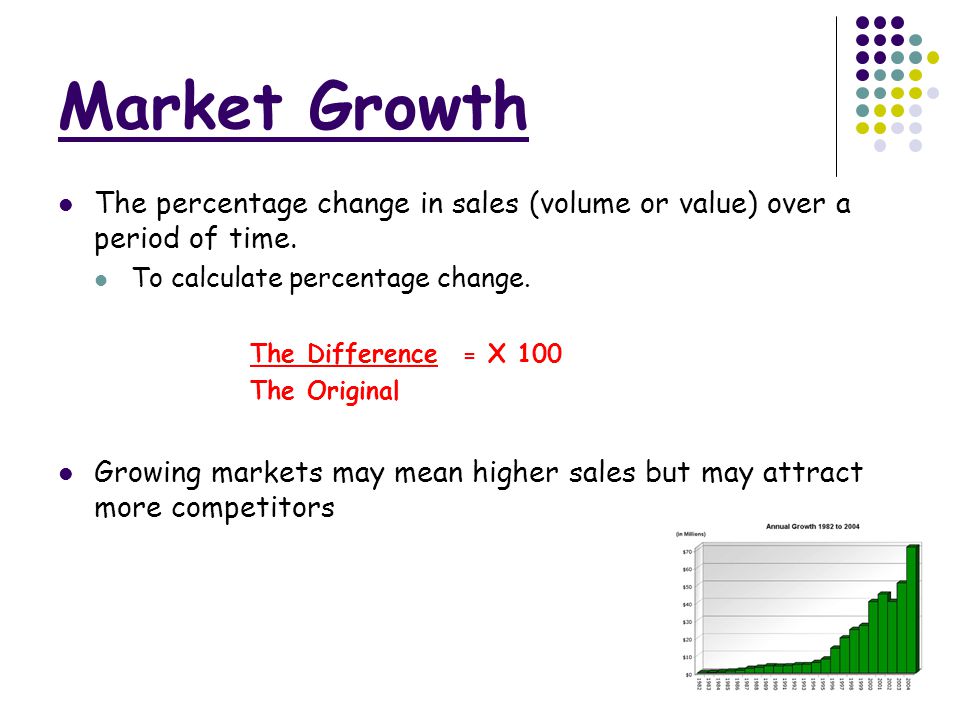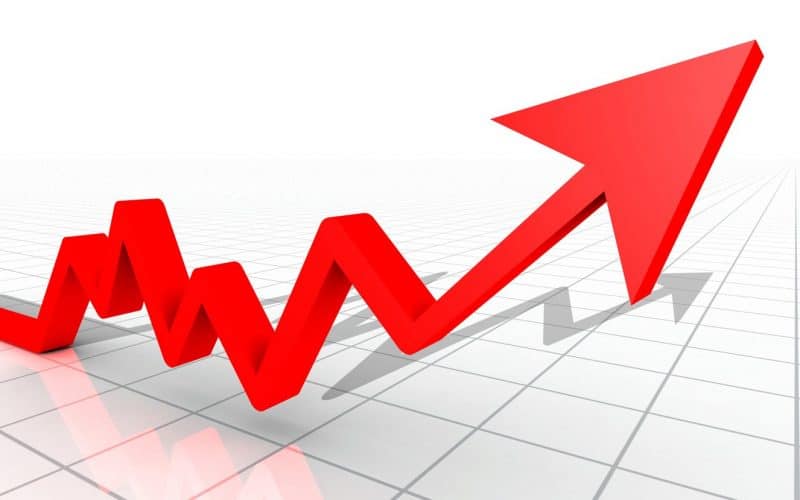Market growth is based on a number of factors. It does not happen overnight like tons of business owners expect it to. Certain market growth strategies need to be in place, with strict adherence to some dos and don’ts. But more importantly, you should also be able to make some market growth calculations from time to time to monitor your progress which is almost impossible without the knowledge of rates. If you wait long enough, these will no longer be a problem at the end of this article. However, it is vital to note early enough in this post that there is no such thing as types of market growth; not like it’s any relevant. Rather we will go through the factors that really affect market growth.
Knowing these factors will help you build market strategies on your own, which is more ideal. More often than not, it gets really daunting for a business or company to try following a certain strategy designed for another business even though they are in the same niche. Although there are some generic market growth strategies out there, you would still need to tweak them at some point.
So let’s get cracking…
What is Market Growth?
This is characterized as an increase in the market’s demand for a product or service. Typically, this growth occurs during a company’s expansion period. Companies aim to improve the product’s appeal by promoting features and, on occasion, offering competitive prices to increase sales.
If a product is accepted in the market at a certain price point, the market can expand in a positive way. So, if consumers accept this price point or accept the product, consumer demand rises; if they do not accept the product, demand falls and so does its growth. In other words, the demand for a product is directly proportional to its growth.
Understanding the Concept
Often times, when the price of a commodity rises, the consumer base shrinks. As the price of a high-value commodity decreases, the number of customers increases. As a result, it is possible to conclude that the number of customers is inversely proportional to the price of the good or service. The lower the price, the more customers there are, and vice versa.
Several factors influence market growth, including product demand and supply, market nature, and competitors. These elements have a direct impact on business growth.
Market Growth Indicators
The following factors are some of the vital points you should not take for granted in your quest to build a reliable strategy for market growth. However contrary to what you may have been led to believing, this should not be confused for market growth types.
Demand
The desire for a product or service by a consumer in the market is known as demand. It is influenced by a number of factors, including the product’s price, market conditions, competitor goods, and market patterns. The market grows as the demand for a commodity increases.
As a result, demand is proportional to market growth. As opposed to the competition, however, if the demand for rival goods rises, it will affect demand for your product, even if the market grows.
Supply
When supply increases, the price of the commodity decreases; but, when supply decreases, the price of the same product rises dramatically. Since consumers must pay higher prices for the same commodity as the price of the product rises, demand growth rises.
As supply grows, it has a different impact on market growth. If the price of the commodity continues to decline or if consumers discover alternative goods, there could be a negative demand development.
If a commodity is priced at a premium, the standard pricing can change. There could be variations in the product, or it could just be this more expensive version of the same product. Premium pricing has a secondary benefit that sets it apart from other alternatives. In the aviation sector, for example, the price of a flight seat varies depending on the position. A seat on the same flight could cost $400 or $800.
Additional features such as leg room, priority luggage, and so on could make a difference. Market growth will accelerate as demand for premium-priced goods or services rises.
Performance
A higher selling price would be associated with a product that performs better. The sale price will have a positive impact on the market’s growth. There may be a variety of explanations for high results, but the truth remains that it has a positive impact on market growth. For example, various models of cell phones have different features and variations, and the price of all the variations are based on the results.
When it comes to Apple’s iPhones, the most recent model will always be the most expensive, whereas older versions will be less expensive. The most recent models would boost sales for the company and, as a result, market growth.
Commoditization
Commoditization occurs when a consumer makes a transaction based on the product’s price. Because the consumer notices a few minor variations in the goods, this occurs. This normally happens when a new technology or product is introduced to the market, rendering older products redundant.
As DVD players were introduced, for example, the prices of VCRs and CD players plummeted. Similarly, when the iPod was released, the price of cassette players plummeted.
Inflation
One of the most important influences on market growth is inflation. A market that is rising at a certain rate, such as 5%, is not inherently growing in terms of product sales. This would have a significant impact on market growth.
Inflation is a result of unfavorable causes, and it often has a negative impact on market growth for most goods or services. Inflation is a common factor that every product must deal with at some point in order to maintain market growth.
Demographics
For various goods or services, the target market varies in size. Consumer demands can vary depending on the age of the population. For instance, consider a young population with a high demand for new products such as cell phones, shoes, and the latest fashion trends.
Read Also: Best PRODUCT MIX STRATEGIES to Scale Any Business (+ Detailed Guide)
Market Growth Types
For the umpteenth time, the term, “market growth types” is non-existent. In other words, there are really no types of market growth even though most individuals often channel their energies into searching for the term. Rather we have market growth indices or indicators which has been listed above and some folks often confuse for types.
However, you should also know that they are not really vital. Laying down blueprints to help you develop a strategy is a better use of those efforts.
What is the Growth Rate of the Market?
The increase in revenue or market share of a given consumer base over a given period of time is referred to as the market growth rate. When a company conducts market analysis, it must always make reference to the market growth rate, aiding calculations. The rate of revenue growth is compared to the rate of market growth, which makes it a vital component of any business/company.
The company is said to be performing well when the calculations show that the rate of revenue growth is greater than or equal to market growth’s. In a scenario such as this, the business is in good shape and is in the process of expanding. When company is not doing well, however, revenue growth is lower than the market growth rate; in this situation, the manager must investigate the potential causes.
When combined with market share, the market growth rate aids a company’s use of capital in the cash cow and stars.
Market Growth Formula and Calculation
Market Growth Rate= (Change in market size)/(Original market size)
=(Current market size-Original market size)/(Original market size)
The formula above can be used during calculations by businesses to access their market growth rates.
The current market size is the cumulative monetary revenue (including competitors) for a specific product in the current year.
The original market size for a commodity in monetary terms in the base year is the overall sales (including competitors).
Example
Suppose Current market size = 10 billion
Original market size = 8 billion
Market growth rate = (10-8)/6 = 33.33%

The Significance
To get a better analysis of a product, the consumer growth rate can be combined with other factors such as demographics and sales of other goods. The rate of business growth is primarily determined by the product life cycle; market growth is higher when the product is in the launch or growth stage. The rate of growth, on the other hand, will slow down or plummet at the inflection point. To keep the product’s higher profits, the managers must make wise decisions.
The frail, on the other hand, would need medical supplies. As a result, market growth is dependent on population growth and demand.
Calculation of the Market Size
Using the data you’ve collected, calculate market size for each time span you’re calculating. Assume your market is dominated by three firms.
Company A is your company. Your earnings were $15 million in the first year and $16.5 million the second year, for a total of $16.5 million in the last two years. The first year’s sales for Company B were $25 million, and the second year’s sales were $30 million. The revenues of Company C were $12 million and $13.5 million, respectively. When you add up the numbers for each year, you get market sizes of $52 million for the first year and $60 million for the second.
Simple Explanation
Subtract the market size for year one from the market size for year two to calculate market growth. To convert to a percentage, divide the result by the business size for the first year and multiply by 100. If the market size in year one was $52 million and year two was $60 million, divide the $8 million differential by $52 million and multiply by 100 to get a 15.4 percent market growth rate.
Compare the market growth rate to your firm’s growth to see how well you are doing compared to the overall market.
Market Growth Strategies
For starters, it’s vital to know that generic strategies often need tweaking for better results, especially for successful market growth. Furthermore, it also demands loads of trials and errors to find the one that works perfectly. So whichever one you decide to go for on our list of market growth strategies, ensure do the right thing.
What Is Good Market Growth?
But generally speaking, a healthy growth rate should be higher than the pace of expansion of the economy or GDP (GDP). Furthermore, according to Harvard Business Review, the majority of businesses should expand at a pace of between 10% and 25% annually.
What Is Market Growth in Business Plan?
Market growth means that the number of sales of goods, services, and economic activity goes up over time.
How Do You Calculate Market Growth?
To calculate the growth rate, we would divide the increase by the initial market share and multiply the result by 100. This indicates that our company’s market share increased by 150 percent in the previous year. Your computation for market share growth would look like this: 15% / 10% = 1.5 x 100 Equals an increase of 150% over time.
What Is the Reason for Market Growth?
If there are more buyers than sellers (more demand), purchasers will bid up stock prices to encourage sellers to sell more. If there are more sellers than customers, prices will decrease until they reach an amount that attracts purchasers.






